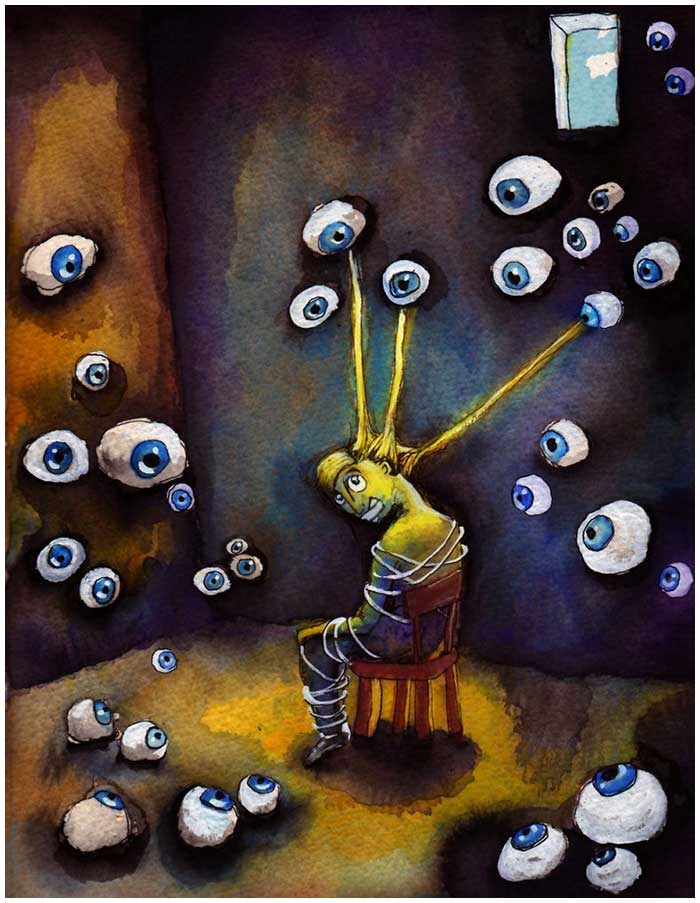Social anxiety disorder or social phobia is a problem for many modern people around the world. It is thought that it can occur in any age group and affects more women than men. However, it mainly affects people between the ages of 20 and 32, and among them are mostly men, because we have a tradition where women can share with their girlfriends and relieve the stress of their worries with this. This is more difficult for men because of many of society’s stereotypes.
Social anxiety becomes a disorder when symptoms of social anxiety are so severe that they significantly affect the quality of daily activities. Social anxiety disorder involves a constant fear of being shamed, ridiculed, or humiliated in a social environment. An inability or unwillingness to communicate in certain situations can accompany social anxiety disorder, with social phobia being quite common in children. This disorder is considered a precursor to agoraphobia and may lead to or develop in parallel with depression.

What is sociophobia?
It is a severe experience in which feelings of fear and anxiety are associated with social situations. People with social anxiety tend to have a fear of public shaming and can be very stressful, in situations:
- Public speaking,
- Taking food in public,
- Use of public toilets,
- Meeting new people.
Sociophobia can be specific to a particular situation, such as meeting new people, or have generalized anxiety about social situations in general. It is important to be able to distinguish between normal social anxiety and social anxiety disorder (sociophobia).
Some of the symptoms of social anxiety disorder:
- Fear of situations in which a person may encounter judgmental
(e.g., having to account for one’s actions). - Anxiety that the situation could cause embarrassment or be humiliating to the individual (I am afraid others will see me blush or sweat from excitement).
- Anxiety that gets in the way at work, school or at home
(afraid to call and call a plumber). - Avoidance of situations that bring anxiety (the young person is embarrassed to meet girls and decides not to do it at all).
People with social phobia experience fear or anxiety that is out of proportion to the situation; they fear anxiety itself and become excessively upset about it. For example, severe job interview anxiety is another form of social phobia.
No one knows for certain what causes social anxiety disorder; it most often begins after a person has encountered a situation of particular embarrassment or a humiliating experience. Unfortunately, in our country, it often happens in children’s institutions at preschool and school age, and leaves a heavy mark on the rest of his life. Relationships with parents or people replacing them also cause.
Social anxiety can be a major cause of sociophobia in cases of severe stress and feelings of anxiety in the presence of people. It often happens that sociophobes feel quite comfortable at home among their loved ones, but are completely lost in a new environment.
Some people call it “shyness,” although social anxiety causes much more severe physical and psychological conditions than just plain shyness. For example: the head is foggy, the heart is ready to jump out of the throat, and all the words are gone – the person as if frozen and does not say a word.
Social anxiety is caused by excessive feelings of humiliation and may be expressed as follows:
- a sharp reddening of the face;
- inability or difficulty to make eye contact;
- sweating;
- cold, clammy hands;
- prolonged shaking.
It is important to understand that, unlike normal social anxiety, social phobia is a condition that affects daily life, affects the biochemistry of the brain and is often related to childhood experiences. This is why parents should pay special attention to how their child’s adjustment processes are going in order to provide timely and appropriate support.
It is believed that the predisposition to social phobia is related to the following factors:
- Heredity – anxiety disorders tend to become entrenched in families or come from family traditions. The extent to which it is an acquired behavior rather than an inherited character trait is not known.
- Brain chemistry – it is thought to be related to serotonin deficiency, which influences the choice of medications in medication treatment.
- Brain structure – a particular part of the brain, known as the amygdala, is involved in controlling the fear response. People with social anxiety disorder may have features in the amygdala structure. In addition, premature infants may be at increased risk of developing social anxiety disorder due to a lack of development in certain areas of the brain.
Moderate social anxiety usually goes away on its own in the process of gaining life experiences. Treatment for social anxiety disorder involves mostly psychotherapy, and can include medication, individual counseling, and group psychotherapy. I practice a smooth transition from individual counseling to group therapy when the client feels ready to go out to a group. Sometimes work with the client and the first sessions begin at his home or via Skype, then there are several sessions at the premises of the psychological center where the client has an opportunity to get acquainted with the environment and the space for group meetings beforehand, and after that group work gives a good impetus to improvement of the condition and quality of life.
Even in the most severe cases, a combination of diverse treatment approaches yields successful results.
